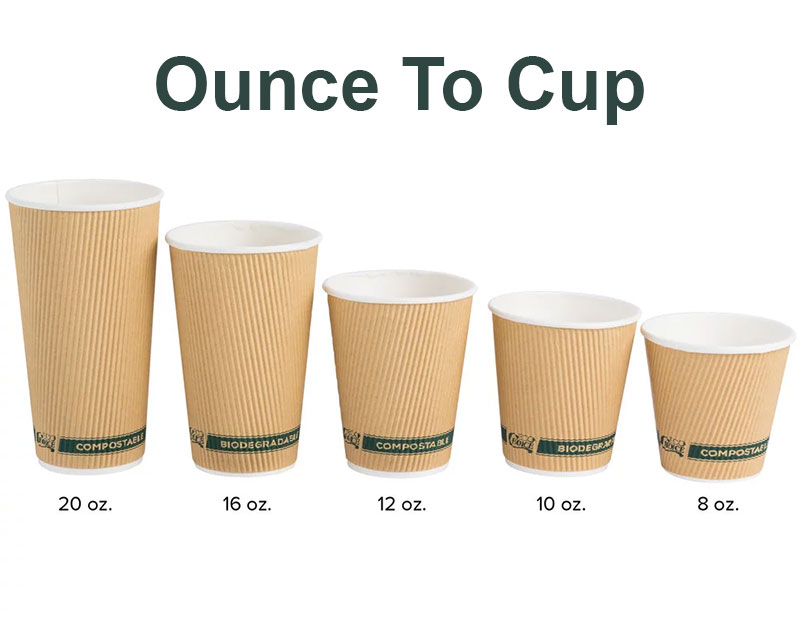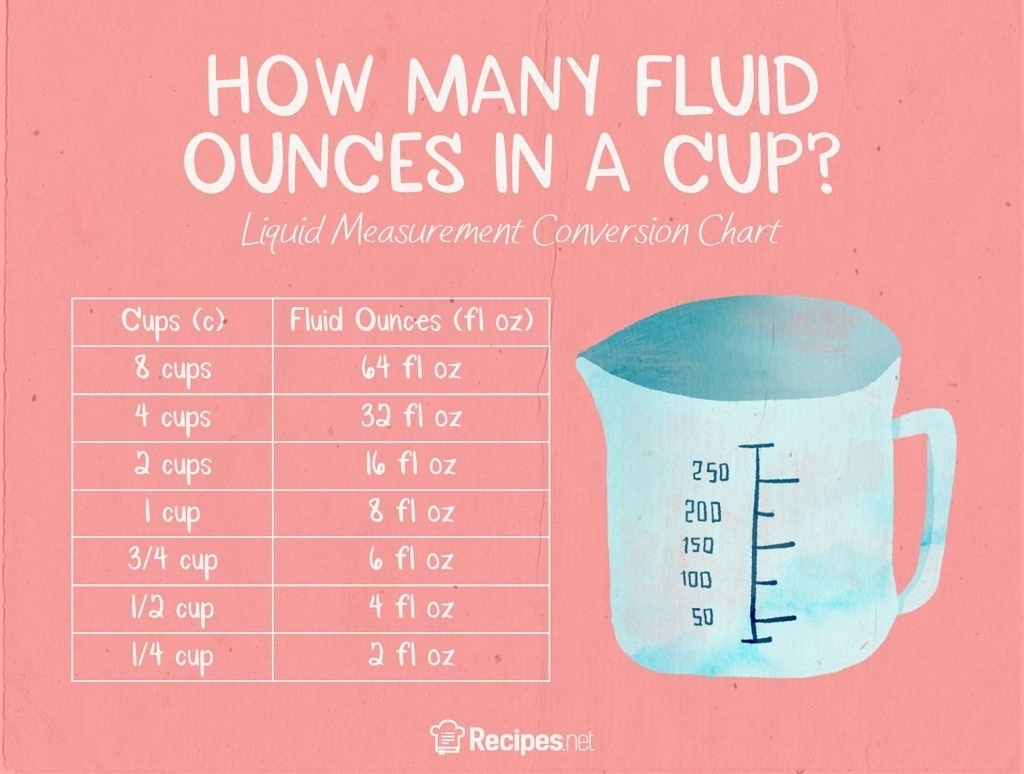Ever found yourself staring at a recipe calling for a precise amount of liquid, like “2 ounces of milk,” only to discover your measuring cups are calibrated in cups? You’re not alone. Navigating the world of liquid measurements can be confusing, especially when dealing with ounces and cups, which are two commonly used units. This article will shed light on the relationship between ounces and cups, helping you confidently measure ingredients for baking, cooking, and even everyday tasks like making beverages.

Image: icseka.weebly.com
Understanding the equivalence between ounces and cups is crucial for achieving accurate results in any recipe. Whether it’s a delicate cake batter or a flavorful soup broth, a slight misstep in measurement can significantly alter the final product. Moreover, this knowledge is helpful in everyday life, whether it’s determining the volume of liquid in a bottle or adjusting a recipe to fit the available measuring tools.
The Connection Between Ounces and Cups: A Liquid Measurement Breakdown
To grasp the connection between ounces and cups, we need to understand that both are units of volume, specifically, units used to measure liquid volume. However, they differ in their scales.
Ounces: The Smaller Unit of Liquid Volume
Ounces (oz) are a common unit for measuring liquid volume, particularly in the United States. An ounce is a smaller unit of liquid volume compared to a cup. You’ll often find ounces labeled as “fl oz” to distinguish them from ounces used to measure weight, which are referred to as “oz avdp.”
Cups: The Larger Unit of Liquid Volume
Cups (c) are a larger unit of liquid volume commonly used in cooking and baking. A standard cup is equivalent to 8 fluid ounces. This means if a recipe calls for 1 cup of an ingredient, you can substitute it with 8 fluid ounces.

Image: recipes.net
The Conversion: How Many Ounces Are in a Cup?
Now, let’s address the core question: how many ounces are in a cup? The answer is 8. Specifically, 1 cup equals 8 fluid ounces (fl oz).
Beyond the Basics: Exploring Different Types of Cups
It’s important to note that the equivalence of 1 cup to 8 ounces applies to standard, US customary cups, also known as “measuring cups.” However, there are variations in cup sizes depending on the cup type. This is where things can get a little trickier.
For example, a “metric cup” is a different measurement unit. It’s important to check the specific volume measurement for the cup you’re using, especially if following a recipe that doesn’t specify the cup type.
Using Mathematical Formulas for Easy Conversion
Once you understand the relationship between ounces and cups, converting between the two units becomes fairly straightforward. To calculate the number of cups in a specific amount of ounces, divide the number of ounces by 8. For instance, if you have 16 ounces, you would divide 16 by 8 to get 2 cups.
Similarly, to calculate the number of ounces in a specific number of cups, multiply the number of cups by 8. So, if you have 3 cups, you would multiply 3 by 8 to get 24 ounces.
Practical Applications: Using Ounce-to-Cup Conversions in Everyday Life
Here are some practical examples where understanding the equivalence between ounces and cups can be extremely helpful:
Baking and Cooking:
Imagine baking a cake that calls for 2 ounces of milk. Your only measuring cup is a standard 8-ounce cup. Using the ounce-to-cup conversion, you can easily deduce that 2 ounces is equal to 1/4 cup. So, you’d simply use 1/4 of your standard cup for the milk.
Beverage Preparation:
You wish to make a large batch of iced tea, but your recipe uses ounces. By converting ounces to cups, you can easily determine how much liquid to use for your tea maker or pitcher.
Food Labeling:
Food labels often list nutritional information in ounces. Understanding this conversion helps you calculate the total number of cups consumed when using a particular food item.
Beyond the Kitchen: Ounces and Cups in Other Settings
The use of ounces and cups isn’t limited to food and beverage preparation. You might encounter ounces and cups in:
Medical Settings:
Medical professionals may prescribe medication in specific dosages, often measured in ounces. Understanding how many ounces are in a cup facilitates proper dosage administration.
Cosmetics and Personal Care:
Hair care products, lotions, and other personal care items may have their volumes listed in ounces. Being familiar with ounces and cups allows you to estimate the amount of product remaining in a container.
2 Ounces Is Equal To How Many Cups
Conclusion: Mastering Ounce-to-Cup Conversions for Confidence in Measurements
Navigating the world of liquid measurements is essential for many tasks, from accurately following a recipe to understanding product labels. This article has shed light on the relationship between ounces and cups, demonstrating how these units relate to one another and providing practical examples to make this knowledge readily applicable. Now, armed with this understanding, you can confidently measure ingredients, confidently convert units, and enjoy the satisfaction of achieving accurate results in your culinary endeavors and other aspects of everyday life.





